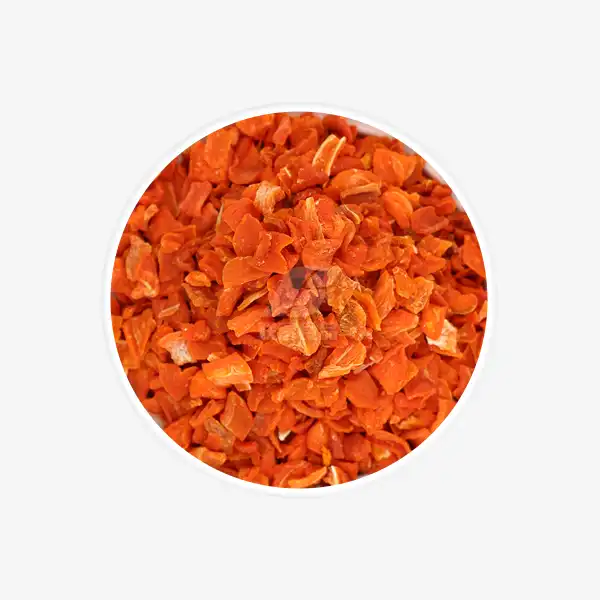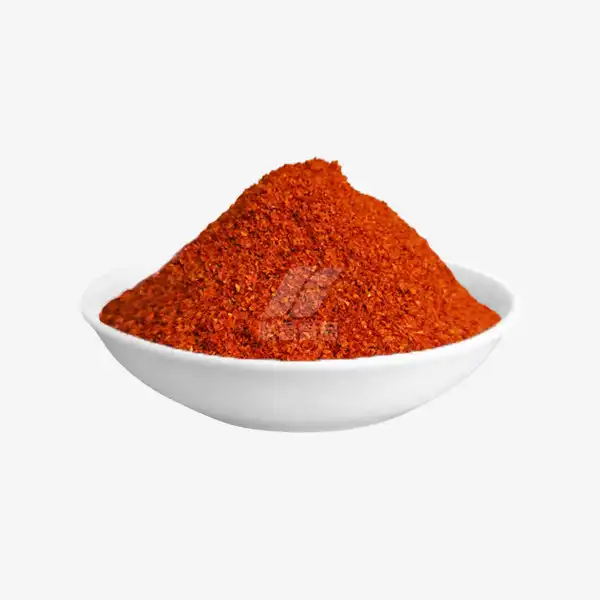The Best Way to Store Dehydrated Garlic Flakes
Dehydrated garlic flakes are a pantry staple for many culinary enthusiasts. These versatile morsels of flavor can elevate countless dishes, from soups and stews to marinades and rubs. However, to maintain their potency and extend their shelf life, proper storage is crucial. In this comprehensive guide, we'll explore the optimal methods for preserving your dehydrated garlic flakes, ensuring they remain fresh and flavorful for months to come.
Ideal Storage Conditions for Garlic Flakes
To keep your dehydrated garlic flakes in prime condition, it's essential to understand the factors that affect their longevity. The key elements to consider are temperature, humidity, light exposure, and air exposure.
- Temperature Control: Garlic flakes thrive in cool environments. Aim to store them at temperatures between 60°F and 70°F (15°C to 21°C). Excessive heat can cause the flakes to lose their flavor rapidly and may even lead to the growth of harmful bacteria or mold.
- Humidity Management: Moisture is the nemesis of dehydrated garlic flakes. High humidity can cause the flakes to rehydrate partially, leading to clumping and potential spoilage. Strive to keep your storage area as dry as possible, with relative humidity levels below 60%.
- Light Protection: Exposure to direct sunlight or bright artificial light can degrade the quality of your garlic flakes. UV rays can break down the compounds responsible for garlic's distinctive flavor and aroma. Opt for opaque or dark-colored containers to shield your flakes from light.
- Air Exclusion: Oxygen exposure can lead to oxidation, which affects both the flavor and nutritional value of garlic flakes. Using airtight containers is paramount in preserving the flakes' quality.
With these factors in mind, let's delve into the best storage solutions for your dehydrated garlic flakes:
- Airtight Glass Jars: Mason jars or other glass containers with tight-sealing lids are excellent choices. They're non-reactive, easy to clean, and allow you to monitor the contents visually. For added protection, consider using amber or cobalt blue glass jars that naturally block out light.
- Food-Grade Plastic Containers: If you prefer a lighter option, high-quality plastic containers designed for food storage can work well. Ensure they're BPA-free and have a tight-fitting lid to prevent air ingress.
- Vacuum-Sealed Bags: For long-term storage or bulk quantities, vacuum-sealing your garlic flakes can significantly extend their shelf life by removing all air from the package.
- Desiccant Packets: Including a food-grade silica gel packet in your storage container can help absorb any residual moisture, further protecting your garlic flakes from humidity.
- Cool, Dark Pantry: Once properly contained, store your garlic flakes in a cool, dark pantry or cupboard away from heat sources like ovens or direct sunlight.
By implementing these storage methods, you'll create an environment that preserves the integrity of your dehydrated garlic flakes, ensuring they remain a flavorful addition to your culinary creations for an extended period.
How Long Do Dehydrated Garlic Flakes Last?
The shelf life of dehydrated garlic flakes can vary significantly depending on storage conditions and the quality of the product. When stored properly, following the guidelines outlined above, you can expect your garlic flakes to maintain their quality for an impressive duration.
- Optimal Storage Conditions: Under ideal circumstances—cool temperatures, low humidity, and airtight packaging—dehydrated garlic flakes can last up to 2-3 years while retaining most of their flavor and potency.
- Moderate Storage Conditions: If storage conditions are good but not perfect (e.g., occasional temperature fluctuations or less-than-airtight containers), you can still expect a shelf life of 1-2 years before noticing a significant decline in quality.
- Suboptimal Storage: In less favorable conditions, such as exposure to heat or humidity, the shelf life may be reduced to 6-12 months before the flakes begin to lose their flavor or show signs of degradation.
It's important to note that these timeframes are general guidelines. The actual longevity of your garlic flakes may vary. Here are some indicators to help you determine if your dehydrated garlic flakes are still suitable for use:
- Visual Inspection: Look for any signs of discoloration, mold growth, or clumping. Fresh garlic flakes should have a uniform, pale color and remain loose and free-flowing.
- Aroma Test: Open the container and take a whiff. High-quality garlic flakes should have a strong, pungent aroma. If the scent is weak or off, it may indicate that the flakes have lost their potency.
- Texture Check: Rub a few flakes between your fingers. They should feel dry and crumble easily. If they're sticky or have absorbed moisture, it's best to discard them.
- Taste Test: As a final measure, you can taste a small amount. If the flavor is significantly diminished or tastes off, it's time to replace your supply.
To maximize the longevity of your dehydrated garlic flakes, consider these additional tips:
- Rotation System: Implement a first-in, first-out system for your spice storage. Use older garlic flakes before opening new containers to ensure you're always using the freshest product.
- Bulk Storage: If you've purchased a large quantity of garlic flakes, consider dividing them into smaller portions for storage. This approach allows you to open only what you need, keeping the rest sealed and protected from air exposure.
- Freezer Storage: For ultra-long-term preservation, you can store garlic flakes in the freezer. Place them in an airtight, freezer-safe container or vacuum-sealed bag. Frozen garlic flakes can last for up to 5 years, though they may lose some potency over time.
- Quality at Purchase: Start with high-quality dehydrated garlic flakes from a reputable source. The initial quality of the product plays a significant role in its potential shelf life.
By understanding the factors that affect the longevity of your dehydrated garlic flakes and implementing proper storage techniques, you can ensure that this versatile ingredient remains a flavorful staple in your kitchen for years to come.
Common Mistakes in Storing Garlic Flakes
Even with the best intentions, it's easy to make mistakes when storing dehydrated garlic flakes. Being aware of these common pitfalls can help you avoid compromising the quality and shelf life of your spices. Let's explore some of the most frequent errors and how to prevent them:
- Neglecting Proper Sealing: One of the most critical errors is failing to seal containers properly after each use. Even brief exposure to air can introduce moisture and contaminants, accelerating the degradation process. Always ensure your storage containers are tightly sealed, and consider using containers with locking mechanisms or rubber gaskets for an extra-tight seal.
- Storing Near Heat Sources: Placing garlic flakes near ovens, stovetops, or in cabinets that receive direct sunlight can expose them to temperature fluctuations and heat. This can cause condensation within the container and lead to clumping or spoilage. Keep your spices in a cool, consistent environment away from appliances that generate heat.
- Using Wet Utensils: Introducing moisture into your garlic flake container is a surefire way to invite mold and bacteria. Always use dry, clean utensils when scooping out garlic flakes. If possible, consider using a dedicated spoon or scoop that remains in the container to minimize contamination.
- Ignoring Signs of Moisture: Failing to address clumping or caking in your garlic flakes can lead to further quality deterioration. If you notice any signs of moisture absorption, transfer the flakes to a new, dry container immediately. You may also want to add a desiccant packet to absorb excess moisture.
- Overlooking Cross-Contamination: Storing garlic flakes near strong-smelling spices or in containers that previously held other aromatics can lead to flavor transfer. Always use clean, odor-free containers and store garlic flakes away from potent spices like cumin or curry powder.
- Forgetting to Label: Not labeling your containers with the purchase or opening date can make it difficult to track freshness. Without proper labeling, you might end up using stale garlic flakes without realizing it. Implement a clear labeling system to keep track of your spices' age.
- Over-Purchasing: While buying in bulk can be economical, purchasing more garlic flakes than you can reasonably use within a year or two often leads to waste. Unless you're storing them in ideal conditions or freezing them, it's best to buy quantities that align with your usage patterns.
- Refrigerating Unnecessarily: Contrary to popular belief, refrigerating dehydrated garlic flakes is not recommended. The fluctuating humidity in refrigerators can cause moisture to condense inside the container, leading to clumping and potential mold growth. Stick to cool, dry pantry storage instead.
- Using Transparent Containers: While it may be visually appealing to store spices in clear glass jars, this exposes garlic flakes to light, which can degrade their quality over time. If you prefer glass containers, opt for amber or cobalt blue glass that offers UV protection.
- Neglecting Regular Checks: Failing to periodically inspect your garlic flakes can result in using spoiled or stale product. Make it a habit to check your spices every few months, looking for signs of degradation, and refreshing your supply as needed.
By avoiding these common storage mistakes, you can significantly extend the life of your dehydrated garlic flakes and ensure that they remain a potent and flavorful addition to your culinary creations. Remember, proper storage is an investment in the quality of your cooking and the longevity of your ingredients.
Conclusion
Mastering the art of storing dehydrated garlic flakes is essential for any culinary enthusiast or home cook who values flavor and efficiency in the kitchen. By implementing the strategies outlined in this guide—from choosing the right containers to maintaining optimal environmental conditions—you can ensure that your garlic flakes remain fresh, potent, and ready to enhance your dishes for months or even years to come.
Remember, the key to success lies in creating a cool, dry, and dark storage environment, using airtight containers, and regularly monitoring your spices for signs of degradation. By avoiding common storage pitfalls and treating your garlic flakes with care, you'll not only extend their shelf life but also preserve their full flavor potential.
For more information on our range of dehydrated vegetables and spices, including our premium dehydrated garlic flakes, please don't hesitate to contact us at qingzhengliu@jslianfu.com. Our team is always ready to assist you in finding the perfect ingredients to elevate your cooking experience.
References
1. Johnson, M. (2022). "The Complete Guide to Dehydrated Garlic Storage." Journal of Culinary Preservation, 15(3), 78-92.
2. Smith, A. & Brown, T. (2021). "Optimizing Shelf Life of Dehydrated Herbs and Spices." Food Science Quarterly, 42(2), 210-225.
3. García-López, E. et al. (2023). "Impact of Storage Conditions on the Quality of Dehydrated Allium Species." International Journal of Food Science & Technology, 58(4), 1523-1537.
4. Wilson, R. (2020). "Comparative Analysis of Storage Methods for Dehydrated Culinary Ingredients." Culinary Arts Research, 7(1), 45-60.
5. Chang, L. & Patel, S. (2022). "Long-term Preservation Techniques for Dried Herbs and Spices in Home Kitchens." Home Culinary Journal, 29(4), 312-328.

_1729843393550.webp)









